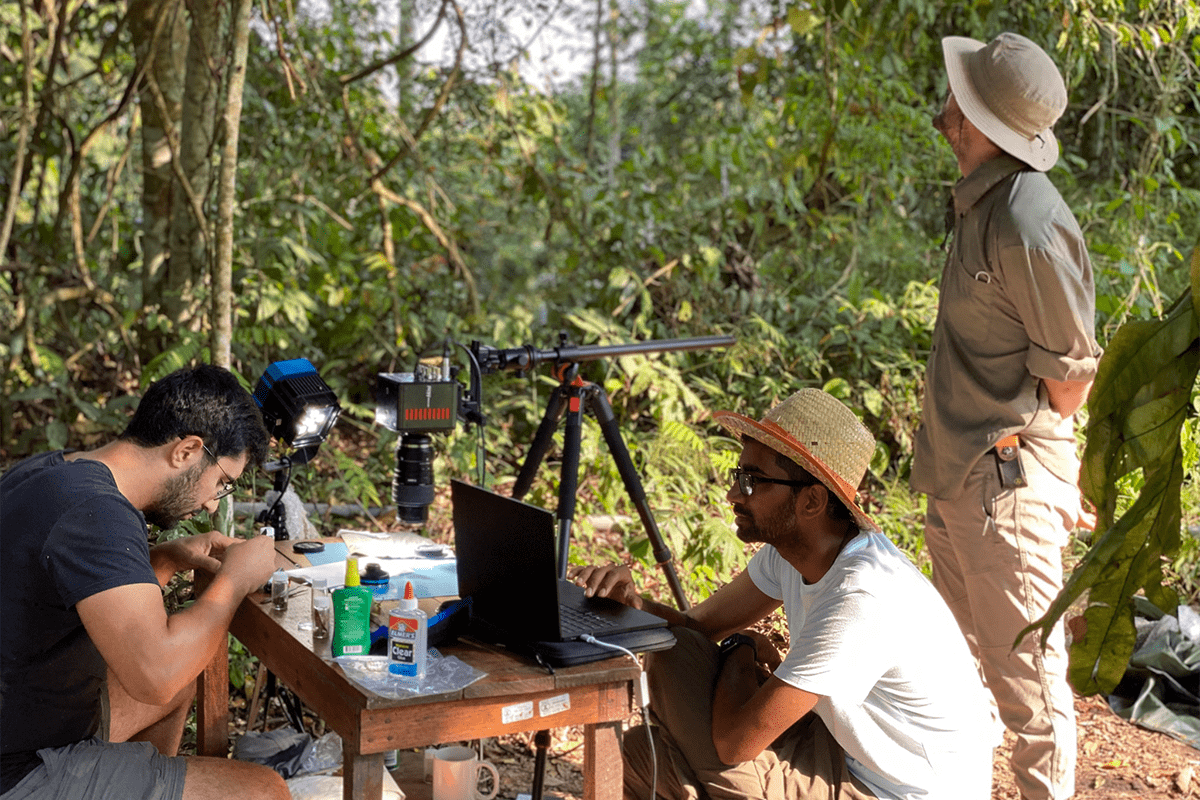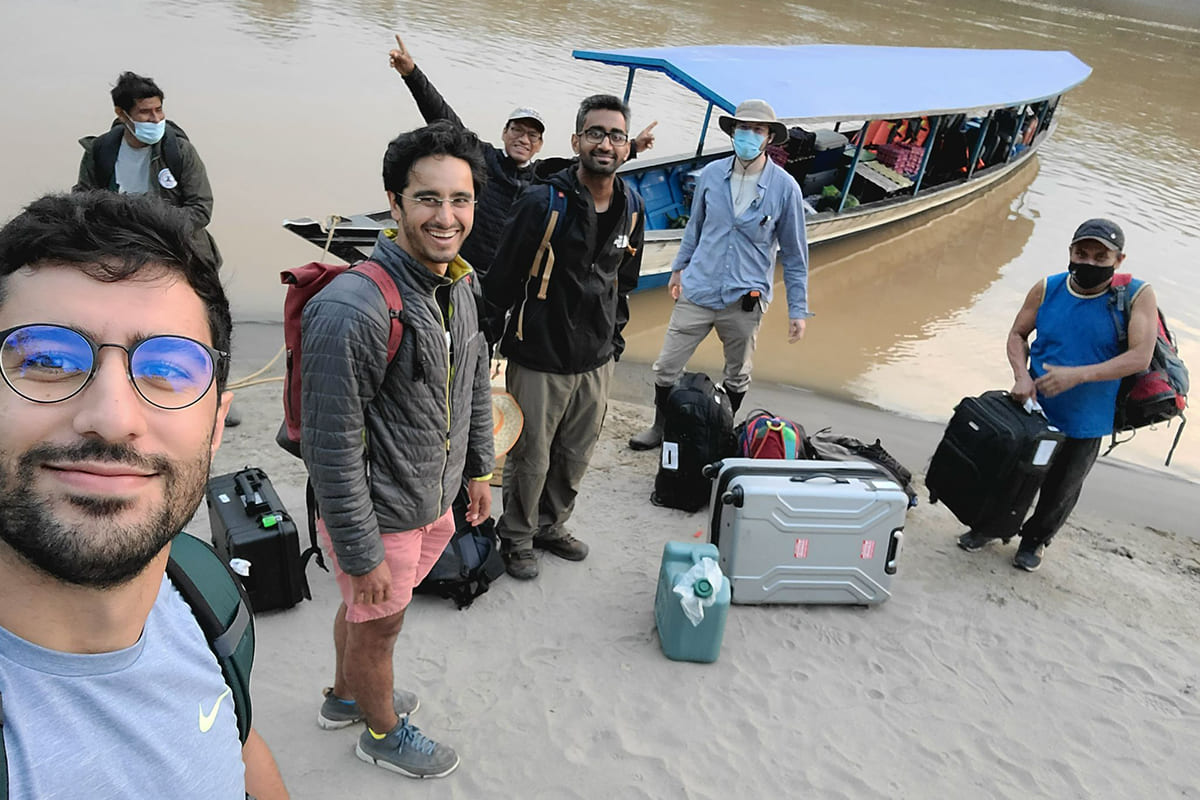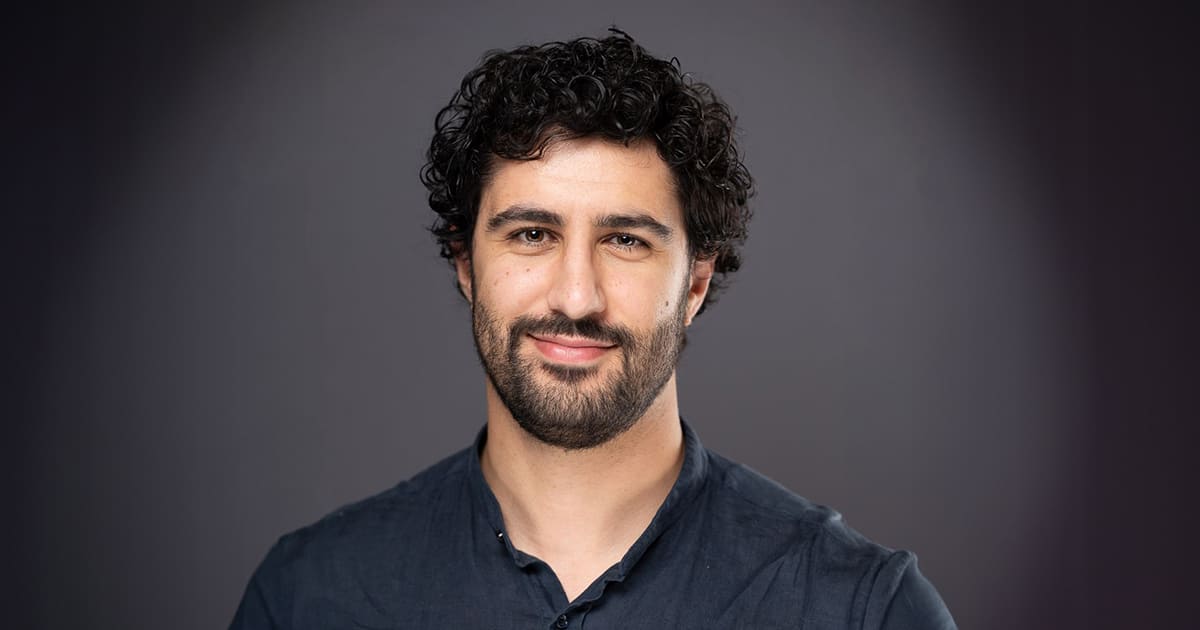Can Insect-Scale Bots Help the Planet? Alumnus Elio Challita Is on a Mission to Find Out
A Schmidt Science fellow and microrobotics researcher, Dr. Challita hopes to create insect-inspired robots that can sample, analyze and share real-time results on water contamination.
From a young age, LAU alumnus Elio Challita (BE ’15) was fascinated by the diversity of biological systems, particularly insects, the wide array of their mechanisms and adaptations to their environments.
This, combined with superior physics and math skills, drove him to major in mechanical engineering, which offered him a new lens on biological systems and the potential to bridge biological understanding and engineered solutions.
Last month, Dr. Challita became the first Lebanese to be named a Schmidt Science Fellow whose objective is to develop an insect-inspired microrobot for environmental monitoring. The fellowship is considered among the world’s top postdoctoral awards for early-career scientists and this year was awarded to only 32 fellows nominated by select institutions worldwide.
After graduating from LAU, Dr. Challita obtained a master’s in mechanical engineering from the University of Georgia and, last August, a PhD in Bioengineering from the Georgia Institute of Technology. He is currently a postdoctoral researcher at the Harvard Microrobotics Laboratory.
In this interview, he talks about his research and how it contributes to monitoring water contamination. He also shares valuable advice on multidisciplinary learning and research.
Tell us about your field of research and what inspired you to pursue this track.
My PhD research combined the physics of living systems and fluid dynamics to understand how small animals, like insects and spiders, navigate challenges on small scales. These creatures grapple with forces like surface tension, viscosity, and electrostatics to perform their biological functions, such as locomotion, feeding, excretion, and predator avoidance, which are necessary for their survival and proliferation.
Our research questions were inspired by observations from our fieldwork in biodiverse regions like the Amazon rainforest and the neotropics in Costa Rica and Panama. How do sharpshooter insects live efficiently on a frugal diet of almost 95 percent water? How do tiny slingshot spiders catapult themselves at the breakneck speed of 130G (gravitational force) to capture their prey, then manage to stop? And how do springtails jump up to 30 times their body size and control their landing on the water’s surface? In our quest for answers, we discovered new biophysical phenomena with far-reaching implications in ultrafast mechanisms in nature and energy-efficient robotics.
Recently, as a Schmidt Science Fellow, I pivoted my research focus from biophysics to robotics, as I am specifically interested in developing insect-scale robots. I believe that such bioinspired approaches could offer insights into biological systems and potentially advance the field of robotics.
 A makeshift imaging setup at the Los Amigos Biological Station to study the biomechanics and fluid dynamics of insects and spiders.
A makeshift imaging setup at the Los Amigos Biological Station to study the biomechanics and fluid dynamics of insects and spiders.
What are the environmental challenges that your research and its application can help solve, and how?
I am working on developing a robotic platform that can perform chemical experiments in the field. It will be able to collect samples and run analyses in situ, thanks to two key technologies: lab-on-a-chip microfluidic technology and microrobotics. This would allow us to detect and monitor environmental and hazardous pollutants with high spatial and temporal resolution, which could be particularly useful in situations like oil spills or disaster sites.
The goal is to have a swarm of these robots that can collectively scout areas that are inaccessible or dangerous for humans. By providing real-time data and analysis, they could significantly enhance our ability to respond to and assess environmental challenges, and make more informed decisions to protect our environment.
 Dr. Challita and other members of the Bhamla Lab arriving at the Los Amigos Biological Station in the Madre de Dios region, Peru, to conduct fieldwork.
Dr. Challita and other members of the Bhamla Lab arriving at the Los Amigos Biological Station in the Madre de Dios region, Peru, to conduct fieldwork.
Looking back at your LAU years, what were some courses and experiences that first intrigued you to pursue a career in academia?
About a decade ago, as an undergraduate at LAU, I had the chance to take a variety of courses that sparked my interest in research. I was particularly fascinated by subjects like kinematics, computer-aided design, control systems, mechanics of vibrations, and fluid dynamics. During this time I worked on my first project with a few classmates, where we applied bioinspired principles to develop a low-cost energy-harvesting device inspired by fish locomotion. It was an enjoyable and eye-opening experience.
Since then, I have integrated concepts from these courses and others into a unified framework that I use to approach scientific problems in my research. Leveraging the strengths of different fields can yield innovative solutions to complex problems, and I find this interdisciplinary approach to be fun and engaging.
During the last two years at LAU and shortly after graduation, I worked with (then) Associate Professor of Mechanical Engineering Barbar Akle and Associate Professor of Chemistry Brigitte Wex. I conducted scientific research on a variety of topics, from bioinspired smart materials to synthetic organic chemistry. Additionally, for my minor in computer science, I briefly worked with Associate Professor of Computer Science Danielle Azar. These professors, among others, inspired me to choose a career in academia, and my undergraduate experiences exposed me to the exciting possibilities of combining insights from different fields.
What is your advice to current LAU students and young alumni who wish to pursue an interdisciplinary research track?
Take full advantage of the LAU community and alumni network, in Lebanon and abroad. Reaching out to professors who are conducting research in your areas of interest is particularly valuable, as their guidance and the opportunity to contribute to their projects can significantly shape your career trajectory.
To further enhance your chances of success, I recommend starting scientific research during your final years as an undergraduate. Hands-on experience allows you to learn about the research process, work closely with a professor, develop the necessary skills and knowledge and gain a competitive advantage when applying for graduate studies.
When approaching interdisciplinary research, it’s crucial to maintain an open mind and be willing to explore problems through various lenses, even if they don’t directly align with your background. This mindset can lead to collaborations with experts from different fields, which will give you new perspectives and insights that can be useful in tackling complex problems more effectively.
From personal experience, the path to an academic career is often non-linear, but don’t be discouraged. My own journey from LAU to the University of Georgia, then to Georgia Tech, and now Harvard, was quite unplanned and full of twists and turns. But I achieved my goals through hard work, networking with the right people, being prepared when opportunities presented themselves, and thanks to a great support system of family and friends. Embracing challenges and learning from experience is essential for personal and professional growth, and it is key to navigating the dynamic landscape of interdisciplinary research.
This interview has been edited and condensed for the sake of clarity.
